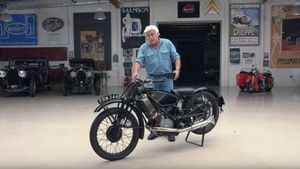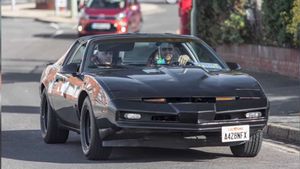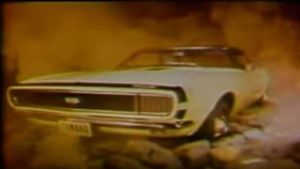The 2005-2013 Cayman 987 is the hidden gem of modern classic Porsches, lower profile than the Boxster or 911, but no less rewarding
##How much to pay
• Project n/a • Good £12,500-25,000 • Concours £25,000-45,000 •
• Most expensive at auction: £38,401
##Overview
Practicality ★★★
Running costs ★★
Spares ★★★★
DIY friendly ★★
Investment ★★★
Desirability ★★★
Heavily based upon the Type 987 Boxster – they’re the same from the waist down – the Cayman is a sweet-driving coupé that occupies a slightly awkward spot in the Porsche hierarchy. In 3.4-litre S form, it comes very close to 911 levels of performance, but it cost more than the Boxster when new and so needed to offer something over and above its open sibling.
Even if road tests tended to describe the Cayman as ‘brisk’ rather than fast, you’re unlikely to feel regularly short changed in normal conditions. Even the basic model will get to 60mph in about six seconds, and the quality of the chassis makes up for any perceived limitations in straight-line speed. The steering, accessible nature of the performance, overall agility, roadholding – it all adds up to a fabulously rewarding little package.
There are two generations of 987 to consider. The standard Generation 1 car had a 2.7-litre flat-six, with the S model boasting a 3.4 unit. For the Generation 2 model, the ‘entry-level’ Cayman was uprated to 2.9 litres.
Your Motorious 2005-2013 Porsche Cayman 987 inspection checklist
Engine
There were three engine variants across the 987’s production run: the M97.21 in 2.7 and 2.9-litre form, plus the M97.20 3.4-litre unit in the S. The biggest scare stories concerning the Generation 1 Cayman are to do with the intermediate shaft (IMS) bearing and scoring of the cylinder bores. The problem with cylinder scoring concerns only a small percentage of cars, with the 3.4 seeming to be worse affected. Look for excessive smoke when starting from cold, and evidence of increased oil consumption.
For the 2007 model year, Porsche fitted a stronger IMS bearing that greatly reduced the problems suffered by earlier engines. One that’s failing, however, will emit a rattle while the engine’s idling. There can also be an issue with a leaking rear main oil seal, but new replacement seals can solve that.
The Generation 2 987 – introduced for the 2009 model year – featured an all-new engine that eliminated each of the above problems, so it’s worth stretching to that if you can. With all variants, evidence of regular servicing is essential, in particular an annual oil change.
Gearbox
Generation 1 Caymans had the choice of a manual gearbox or Tiptronic auto. The latter wasn’t ideally suited to the little coupé and for the Generation 2 it was replaced by the PDK unit, which is a completely different kettle of fish. Early PDK cars had a button system that was widely described in contemporary road tests as being counter-intuitive, but which nonetheless has its supporters among owners. Porsche later fitted paddle-shifters.
Each variant of transmission has proven to be reliable, but listen for untoward noises during the test drive, and make sure that each gear can be selected cleanly, warm or cold.
Suspension and brakes
The basic 987 came with 17in alloys as standard, but most now ride on the optional 18s. The S had those as standard, with the option of specifying 19s. Bear in mind that a car on 19s will be fine with the PASM in Normal mode, but for road use it’ll be pretty harsh in Sport. Tyres should be to Porsche’s N-rated specification. They can be identified by N1, N2, N3, etc embossed on the sidewall and should match all round.
Hard track driving in Generation 1 cars can make the hydraulic power steering pump overheat (specialists can supply modified ones) and wear out track-rod ends (Generation 2 cars had larger ones that are more durable). On the subject of circuit driving, firmer springs and dampers can help a little, but for general road use the factory set-up is already close to ideal.
The Generation 1 S Sport Edition and Porsche Design Edition 1 are lowered by 10mm, while the hardcore R drops that by another 20mm and comes with a limited-slip diff as standard.
Brakes should be strong across the range: standard models have 298mm vented discs up front, while the S boosted that to 318mm. There was the option of carbon-ceramic discs, but that’s very rare.
Bodywork
With even the earliest Caymans being little over a decade old, there shouldn’t be any problems with corrosion. If you do find areas of rust, they’re likely to be where accident damage has been poorly repaired – not a good sign.
The radiators are positioned in a vulnerable area at the front. They can pick up damage from stones and become clogged with debris, so have a look to see what sort of condition they’re in. Many conscientious owners have fitted grilles to the air intakes to protect them. Replacement radiators are very expensive via Porsche, but can be sourced more affordably via independent specialists.
On the subject of front-end damage, the headlamp lenses can pick up stone chips and cracks, and they’re also costly to replace.
Early Caymans can suffer from a rear-hatch rattle that might be due to it not sealing properly. The bump-stops can be adjusted in an effort to improve it, but others have pointed the finger at a small counter-weight that’s positioned in the panel to eliminate resonance. The noise comes from the suspended weight moving when the car goes over bumps. Porsche issued a Technical Service Bulletin in an attempt to fix it, but owners report varying degrees of success.
Interior
The Cayman’s impressive build quality means that interiors are holding up well, even on high-mileage cars. Inspect the seat bolsters for excessive wear, though. If the optional electric adjustment is fitted, make sure it operates correctly.
Ditto for the rest of the electrical equipment – there’s far less of that to check on the lightweight Cayman R, which ditched the stereo and air-con, and also featured bespoke seats. The Generation 1 S Sport, meanwhile, came with Alcantara trim on the seats, steering wheel, handbrake and gearlever, plus stainless-steel sill protectors.
The Porsche luggage set makes the most of the space available, and turns the Cayman into a sensible proposition for touring. Finally, make sure that the front and rear hatch releases are working properly.
History
- 2005: 987 Cayman S launched
- 2006: Standard Cayman joins the range
- 2008: S Design Edition 1 and S Sport Edition introduced
- 2009: Generation 2 deliveries start
- 2011: Cayman R becomes available
- 2012: New 981 Cayman replaces 987
Motorious says…
Good looking, brilliantly entertaining and eminently usable, the Cayman marked one of Porsche's regular sweet spots. As ever, though, it would be wise to get any potential purchase inspected by a specialist. Although the headline-grabbing engine gremlins are exceedingly rare on early 987s, the Generation 2 cars did away with them altogether. Add the fact that PDK replaced Tiptronic, and you have a compelling case for the later model.
Make sure you drive the car on a road that will enable you to check whether or not the rear hatch rattles. If you ever need to occupy an hour or two, search for ‘Cayman trunk clunk’ – the forums are full of it. Hopefully, it should have been lessened if not eliminated by now, thanks to the fixes that circulated when the car was new.
A regularly used and fastidiously maintained Cayman with more miles can be preferable to a rarely driven car. Certainly, a high-mileage example is nothing to shy away from as long as it comes with a bulletproof service record.
Picture courtesy of Porsche




